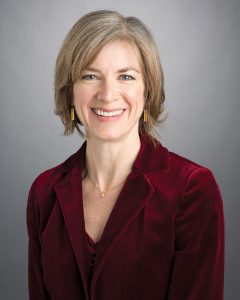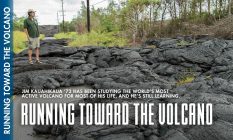
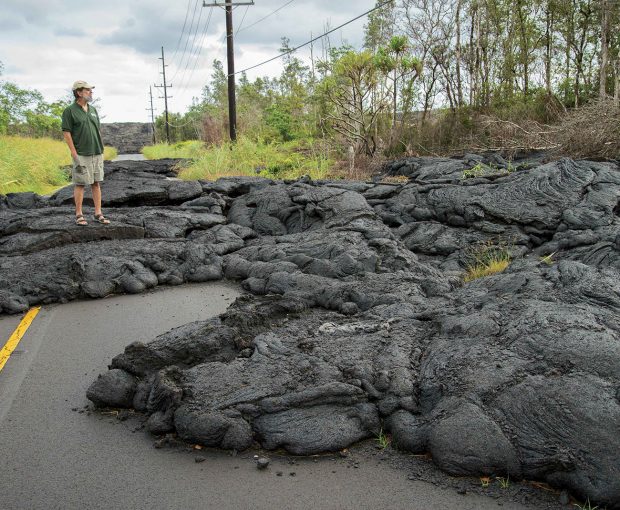
Jim Kauahikaua ’73 stands on one of a series of lava flows blocking a highway just south of Pāhoa, on the Big Island of Hawaii.
The eruptions on the island of Hawai‘i—better known as “the Big Island”—are a few weeks old, and it’s becoming clearer by the day that this time is different. Bigger. Less predictable. More explosive. At a press update at the Civil Defense office in Hilo, a tall man with a tangle of gray-white beard and a baseball cap turned backward steps in front of the cameras and introduces himself in a soft, gravelly voice.
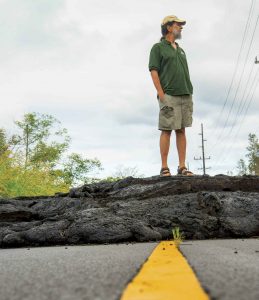 “Jim Kauahikaua, U.S. Geological Survey’s Hawaiian Volcano Observatory. I’ll do a quick summary of what’s happening. Vents eight and 16 have reactivated. Twenty-two and 13 are still the main southbound channels going into the two ocean entries, though those have been quite weak today …”
“Jim Kauahikaua, U.S. Geological Survey’s Hawaiian Volcano Observatory. I’ll do a quick summary of what’s happening. Vents eight and 16 have reactivated. Twenty-two and 13 are still the main southbound channels going into the two ocean entries, though those have been quite weak today …”
His tone is quiet, his words measured—full of unembellished facts. His answers to questions are patient. If his eyes roll just a bit at some of the uninformed queries from mainland reporters, you can’t see it through his sun-darkened glasses.
His colleague Tina Neal, who succeeded him four years ago as the observatory’s scientist-in-charge, calls this “the voice of the consummate scientist.” And even as repeated explosions rock the volcano’s summit in the days ahead, launching vast columns of ash miles into the sky, that imperturbable baritone, explaining each day’s events, will remain strangely reassuring.
Born on O‘ahu and raised amid the volcanic starkness and splendor of the islands, Jim Kauahikaua ’73 has been studying the volcano known as Kīlauea for most of his life. The first native Hawaiian to serve as scientist-in-charge at the volcano observatory, he is one of a handful of people who can claim both a deep scientific understanding of the world’s most active volcano and a rich and intimate knowledge of its history.
While earning his doctorate at the University of Hawai‘i in Mānoa and throughout the early part of his career as a geophysicist, he probed the volcano’s subterranean secrets with scientific instruments, studying—among other things—the way lava tubes form. More recently, he has worked on assessing hazards and reconstructing the volcano’s past through vintage news accounts, many of them taken from now-defunct Hawaiian-language newspapers that have never before been translated.
As a result, he wasn’t completely surprised by the sudden violence of the 2018 eruptions. It simply reminded him of events from long ago. It’s the kind of connection he’s always on the lookout for as he searches for patterns from the past that can help explain how the volcano is evolving today and predict what it might do tomorrow. “We’ve known for some time that Kīlauea has had explosive phases,” he explains. “The most recent one killed at least 80 Hawaiian warriors at the summit.”
Sagehens vs. the Volcano
Jim Kauahikaua ’73, who served as scientist-in-charge at the Hawaiian Volcano Observatory from 2004 to 2015, wasn’t the first Pomona alumnus to serve in that role. In fact, Sagehen geologists have dominated the post in recent years, holding it for about 20 of the past 44 years. Long before Kauahikaua’s term, there was Bob Tilling ’58, who served from 1975 to 1976. While he was there, Tilling introduced his old geology classmate, Tom Wright ’57, to the volcano, and a few years later in 1984, Wright was appointed scientist-in-charge, serving until 1991.
What he’s referring to is an event that happened in 1790, the final stage of several centuries of explosive summit eruptions that inspired one of the great Hawaiian sagas about the goddess Pele. Many years later, a geologist named Don Swanson connected the folkloric and scientific dots to recreate a vivid picture of what happened near the summit that day.
“Hawaiians had no written language prior to contact with the Western world, so we only know about it through oral traditions,” Kauahikaua explains. “We don’t know how many explosions there were or how strong they were, but we do know that the explosion cloud for one of them was viewed from the other side of the island, so it was visible above the summit of Mauna Loa. That means it was big—a 20,000- or 30,000-foot-high explosive column.”
He even has a good idea about how those 80 warriors may have died. They were probably the victims of what’s known today as a base surge.
“In an explosion, a lot of material is thrown up into the air,” he explains. “The very fine stuff drifts off in the atmosphere and can travel 100 miles or more. But the larger, coarser stuff will just fall right back down, and it falls down as sort of a superheated, gas-charged mass. So it doesn’t just fall and hit the ground. It falls and starts to travel very fast horizontally. That’s a base surge, and those warriors were caught in it.”
For Kauahikaua, Swanson’s work is a model for the kind of pattern-seeking research he’s engaged in today. “Our primary way of trying to forecast what is going to happen in the future is by knowing in detail what has happened in the past,” he says.
These days he’s focusing primarily on the 19th century, a period that he believes still has a lot to offer in understanding the cycles of activity that Kīlauea has passed through.
“I’ve mostly been concentrating on large lava flow eruptions,” he says. “One thing I’ve found is that they all kind of exhibit the same behavior the last couple of months of their existence, and that is that they start to stall and then pulse forward and then stall again. So it’s sort of a pulsating, rather than a steady advance.”
He found that pattern in eruptions in the 1881 event, when a lava flow from Mauna Loa was advancing on what is now the city of Hilo. And he found it again in eyewitness accounts of another Mauna Loa eruption that again threatened Hilo in 1935.
And he saw the same thing near the end of the 2018 eruptions at Kīlauea.
During these most recent eruptions, Kauahikaua found himself right in the middle of the action but, at the same time, frustratingly far from the front lines.
As the observatory’s liaison with the island’s emergency operations center, he saw very little of the historic eruptions with his own eyes. “I was at Civil Defense virtually through the entire thing,” he recalls. “I think I did about a half dozen of the overflights out there, and I was only on the ground twice.”
And yet, every significant piece of information reported back by the teams of observers who were patrolling the rift zone each day passed through his hands as he updated representatives from all relevant organizations—from utility companies to the National Guard—keeping them informed about unfolding events and the resulting hazards that might be facing them that day.
From the first, Kauahikaua says, the public demand for information was “crazy.” But just getting reports from the field was often a struggle. Some of the cell towers in the area had burned down, making cell phone reception spotty. And some members of the teams were novices who had to learn on the job how to make a clear report.
Another problem, Kauahikaua says, was the role of social media, which was handled by USGS geologists thousands of miles away on the mainland. “We were prepared for regular media with conference calls and information releases via email and our website,” he explains. “But social media added a whole new set of demands, sometimes seemingly favoring quickness over quality of information. And anything but quality information would defeat our mission.”
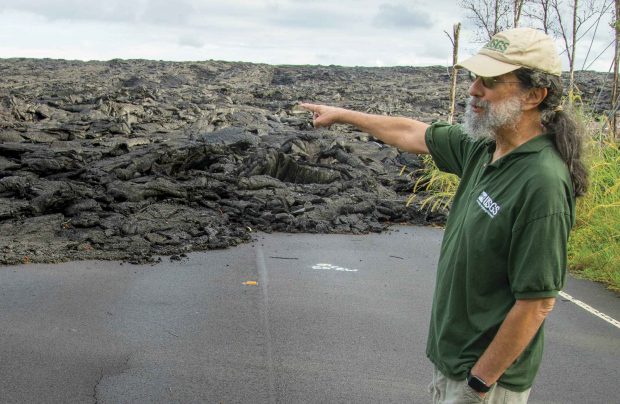 But the main thing that Kauahikaua says tried his patience during those long weeks was the bureaucratic conceit of some of the early incident management teams sent in by the Federal Emergency Management Agency (FEMA), which used the emergency as a training exercise. “None of them had Hawai‘i experience or eruption experience, so—for example, safety out in the field. All of a sudden, we had these people from God knows where, Georgia maybe, telling us what was safe and what was not safe. And that rubbed a lot of people the wrong way.”
But the main thing that Kauahikaua says tried his patience during those long weeks was the bureaucratic conceit of some of the early incident management teams sent in by the Federal Emergency Management Agency (FEMA), which used the emergency as a training exercise. “None of them had Hawai‘i experience or eruption experience, so—for example, safety out in the field. All of a sudden, we had these people from God knows where, Georgia maybe, telling us what was safe and what was not safe. And that rubbed a lot of people the wrong way.”
The 2018 Eruptions by the Numbers
˜1 BILLION CUBIC YARDS OF LAVA ERUPTED
13.7 SQUARE MILES OF LAND INUNDATED BY LAVA
875 ACRES OF NEW LAND CREATED BY OCEAN ENTRIES
716 DWELLINGS DESTROYED BY LAVA
˜30 MILES OF ROAD COVERED BY LAVA
˜60,000 EARTHQUAKES (APRIL 30–AUGUST 4, 2018)
6.9 MAGNITUDE OF THE STRONGEST QUAKE
Another Hilo resident who was quickly drafted to lead one of the teams on the ground, Professor Emeritus of Geology Rick Hazlett, seconds that opinion: “I’ll tell you that they didn’t know volcanic gas from a hole in Kansas. It was disgraceful, I thought.”
However, he believes Kauahikaua was the perfect choice to deal with all of those complicated communication issues. “He’s very exact about the certainty and clarity of detail,” Hazlett says. “So he’s a good filter in terms of making sure that he got good information. The last thing he’d want to do was spread a falsehood. Secondly, he speaks with calm equanimity, irrespective of how he’s feeling inside. And thirdly, he’s a voice that is trusted in this community, because he is Hawaiian, and he’s been here throughout his postgraduate career. He’s not passing through.”
That’s actually an understatement. Hawai‘i is not just Kauahikaua’s home—it’s pretty much the full range and scope of his professional interests and ambitions. “Many of my colleagues are interested in volcanoes, period,” he says. “There is this type, and there is that type. I can honestly say that I am way more interested in our volcanoes than in any other volcanoes.”
Part of that, he admits, is a love of the cultural side of the phenomenon. Native Hawaiians have had a complex and intimate relationship with their volcanoes for centuries and continue to relate to them in ways that outsiders have trouble understanding.
“As a matter of fact,” he says, “you can see this in the most recent event, where lava threatened people’s homes, and native Hawaiians would take the attitude, ‘Pele is related to us. She is in our family tree.’ So they would actually see it as if a relative were visiting, which made me think, ‘That is a very clear understanding of our place on this landscape.’ If you feel that you own a piece of land, it is kind of temporary.”
For Kauahikaua, that sense that everything is temporary isn’t just academic. Indeed, he considers every day that he is able to study the volcano that he loves to be a gift—one he almost lost 15 years ago when he began to have blinding headaches and double vision and was eventually diagnosed with stage-four nasopharyngeal cancer, a tumor just below his brain.
For the better part of a year, he and his wife, Jeri Gertz, moved to Honolulu, where an oncologist put him through more than 40 radiation treatments and five or six chemo treatments. “He said he was going to nearly kill me to cure me, and that’s how it was,” he recalls.
The treatment left him with one deaf ear, significant hearing loss in the other and an enhanced appreciation of his opportunity to keep doing the things he loves. “There are gifts inside the most difficult of challenges,” Gertz says, “and both Jim and I would agree that we found those gifts.”
Asked about retirement, Kauahikaua said he thinks about it often, especially now. The observatory’s offices at Kīlauea were so badly damaged by earthquakes that the organization has had to scatter its personnel among crowded, makeshift office spaces around Hilo—a situation that he finds less than appealing. But he’s not ready to retire just yet.
In any case, Gertz says she doesn’t think retirement would be a change of direction for her husband—just a change of employment. “He will always continue to be this man who studies volcanoes, whether he’s employed with the USGS or not,” she says.
The latest eruptions started at the end of May and petered out near the end of August. They left behind a changed island—not only in a portion of its topography but also in its expectations. As Kauahikaua likes to say, “Our volcano isn’t the type you run away from. It’s the type you run toward.”
He means that literally—Hawaiian volcanoes have enjoyed such a reputation for tameness over the years that they’ve actually been draws for millions of visitors. In fact, he explains, “the activity at Kīlauea was the initial attraction for tourists in the 19th century and the location of the first hotel in the kingdom.”
Indeed, in this idyllic Hawaiian setting, even something as powerful and potentially dangerous as a thousand-foot-high lava fountain can somehow end up seeming harmless, as happened at Kīlauea in 1959. The fountain was right at the edge of a long crater, he recalls. “And so if the winds were right, the winds would blow the fountain debris away from the viewing areas, and any lava produced would fill up this crater. So it was a perfect thing for viewing. It became known as the ‘drive-in volcano.’”
Today, people still come to Hawai‘i to see lava flows and fountains or to watch glowing streams of molten rock slide into the ocean amid roiling clouds of steam—as if it were all a show put on for their entertainment. “Even during this past summer’s explosions and collapses at the summit, there were a few that wanted to see the summit area,” he says. “Several were arrested or cited by the National Park Service.”
But all of those years of constant but fairly predictable activity—more effusive than explosive, in a volcanologist’s terms—might at last be coming to an end. Certainly, the 2018 eruptions seemed to break the mold in a big way—or maybe it would be better to say that they turned back the clock. “Basically, it erupted 10 years of Kīlauea lava in three months,” Kauahikaua says. And it did so with a violence that the island hadn’t seen in centuries.
One good thing he thinks might come out of it is a greater acceptance among island officials of the unavoidable dangers of development in a rift zone, something the scientists at the observatory have been preaching about—largely in vain—for decades. The destruction of more than 700 homes over a three-month period, he says, may have finally changed some political hearts and minds. At least he hopes so.
After all, living in close proximity to one of the most powerful and unpredictable forces on earth calls for a certain degree of humility.
As Kauahikaua says, “Volcanoes were here first.”
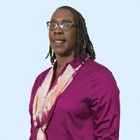
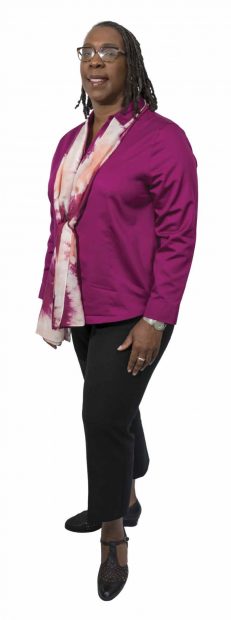 While Avis Hinkson was growing up in a Barbadian immigrant household in Brooklyn, she imagined a career in health care. Instead, her life’s work has been guiding college students, first as an admission officer, later as a director of advising and now as Pomona College’s dean of students. “I didn’t go to college thinking I would stay in college,” she says with a laugh. She tells students that “as a college student, you want to chart a career path, and I encourage you to do that. But I also encourage you to be open to the right and left turns that sometimes take place, because they can lead you to wonderful career spots that you couldn’t have possibly imagined.”
While Avis Hinkson was growing up in a Barbadian immigrant household in Brooklyn, she imagined a career in health care. Instead, her life’s work has been guiding college students, first as an admission officer, later as a director of advising and now as Pomona College’s dean of students. “I didn’t go to college thinking I would stay in college,” she says with a laugh. She tells students that “as a college student, you want to chart a career path, and I encourage you to do that. But I also encourage you to be open to the right and left turns that sometimes take place, because they can lead you to wonderful career spots that you couldn’t have possibly imagined.” Absorb the lesson while growing up in a culturally rich neighborhood that education is the path to a better life. Watch your mother, a seamstress, graduate from college in her 50s after going to work as a teacher assistant.
Absorb the lesson while growing up in a culturally rich neighborhood that education is the path to a better life. Watch your mother, a seamstress, graduate from college in her 50s after going to work as a teacher assistant. Go along with a high school friend to meet a recruiter from Barnard College. Be impressed that the recruiter is African American, and with the help of financial aid (Barnard costs more than your father makes in a year’s work as a mason), become one of about 25 Black students in a class of 500.
Go along with a high school friend to meet a recruiter from Barnard College. Be impressed that the recruiter is African American, and with the help of financial aid (Barnard costs more than your father makes in a year’s work as a mason), become one of about 25 Black students in a class of 500. Bump into Barnard student Vernā Myers on your way to the career center to pick a work-study job as a first-year student. Heed the advice of the future Netflix vice president when she suggests a job in the admissions office. Create Barnard’s first overnight-visit program for prospective students of color.
Bump into Barnard student Vernā Myers on your way to the career center to pick a work-study job as a first-year student. Heed the advice of the future Netflix vice president when she suggests a job in the admissions office. Create Barnard’s first overnight-visit program for prospective students of color. Listen to Barnard senior Marcia Sells (a future dean of students at Harvard Law School) when she encourages you to run for the student seat on the Board of Trustees. Take part in the decision that Barnard will remain a women’s college instead of merging with Columbia.
Listen to Barnard senior Marcia Sells (a future dean of students at Harvard Law School) when she encourages you to run for the student seat on the Board of Trustees. Take part in the decision that Barnard will remain a women’s college instead of merging with Columbia. After graduation, become an admissions counselor at Bowdoin, establishing minority recruitment programs there. Decide on a career in higher ed instead of health care, later earning an M.A. in student personnel administration from Columbia University’s Teachers College and an Ed.D. from Penn.
After graduation, become an admissions counselor at Bowdoin, establishing minority recruitment programs there. Decide on a career in higher ed instead of health care, later earning an M.A. in student personnel administration from Columbia University’s Teachers College and an Ed.D. from Penn. Establish minority recruitment programs at Cornell before coming to Pomona in 1990 as associate dean of admissions. Contribute to Pomona’s minority recruitment plan before moving on to become director of minority recruitment at the University of Southern California.
Establish minority recruitment programs at Cornell before coming to Pomona in 1990 as associate dean of admissions. Contribute to Pomona’s minority recruitment plan before moving on to become director of minority recruitment at the University of Southern California. As director of advising for more than 18,000 undergraduates in the College of Letters and Sciences of the University of California, Berkeley, get an eye-opening look at the bureaucracy of a large public university. While furloughed amid a California budget crisis, remember the allure of small liberal arts colleges.
As director of advising for more than 18,000 undergraduates in the College of Letters and Sciences of the University of California, Berkeley, get an eye-opening look at the bureaucracy of a large public university. While furloughed amid a California budget crisis, remember the allure of small liberal arts colleges. Go home again and call your 96-year-old father to tell him you’ve been named as Barnard’s first African American dean of the college. Feel grateful that a man who felt most comfortable talking with the public safety officers and janitors when visiting campus lived to see it.
Go home again and call your 96-year-old father to tell him you’ve been named as Barnard’s first African American dean of the college. Feel grateful that a man who felt most comfortable talking with the public safety officers and janitors when visiting campus lived to see it. Go home again (again). Leave behind your newly renovated childhood home in Brooklyn and return to Pomona as you are drawn back to the campus where G. Gabrielle Starr has recently become Pomona’s 10th president, the first woman and first African American to lead the campus.
Go home again (again). Leave behind your newly renovated childhood home in Brooklyn and return to Pomona as you are drawn back to the campus where G. Gabrielle Starr has recently become Pomona’s 10th president, the first woman and first African American to lead the campus. Discover that April Mayes ’94 is now a professor of history at Pomona, and Nate Kirtman III ’92 is on the Board of Trustees. (Both were student workers in admissions when you worked at the College before.) Know that the seeds you planted have helped make Pomona one of the most diverse private residential liberal arts colleges in the country.
Discover that April Mayes ’94 is now a professor of history at Pomona, and Nate Kirtman III ’92 is on the Board of Trustees. (Both were student workers in admissions when you worked at the College before.) Know that the seeds you planted have helped make Pomona one of the most diverse private residential liberal arts colleges in the country.


 The motif of feral children was in critically acclaimed novelist Pomona College Professor Jonathan Lethem’s index of writing ideas for many years. There was the concept of urban feral children in New York City. Archetypal fictional characters like Tarzan and Mowgli. Real-life stories of feral children. A Pomona College course he designed on animals in literature had a portion devoted to the idea of the feral. All things feral fascinated him. So, a feral child of a different kind was born: the book The Feral Detective. This wild detective-book child was local-born, with the story set in the surrounding Inland Empire, the mountains and the desert region (what Lethem calls “the scruffier east”). He took the feral even farther, exploring desert-dwelling communes and creating two off-the-grid communes, the Rabbits and the Bears, that he writes about in his book.
The motif of feral children was in critically acclaimed novelist Pomona College Professor Jonathan Lethem’s index of writing ideas for many years. There was the concept of urban feral children in New York City. Archetypal fictional characters like Tarzan and Mowgli. Real-life stories of feral children. A Pomona College course he designed on animals in literature had a portion devoted to the idea of the feral. All things feral fascinated him. So, a feral child of a different kind was born: the book The Feral Detective. This wild detective-book child was local-born, with the story set in the surrounding Inland Empire, the mountains and the desert region (what Lethem calls “the scruffier east”). He took the feral even farther, exploring desert-dwelling communes and creating two off-the-grid communes, the Rabbits and the Bears, that he writes about in his book.


 For years I’ve wanted to publish a retrospective about Roger Revelle ’29, the oceanographer and climate scientist widely credited with pushing climate change into the consciousness of the nation and the world. So I’m delighted, finally, to include Ramin Skibba’s beautiful story about the scientist’s life and work in this issue. But as I edited the piece, I was troubled to learn that Revelle was also one of the very first targets of climate deniers—and remains a target to this day.
For years I’ve wanted to publish a retrospective about Roger Revelle ’29, the oceanographer and climate scientist widely credited with pushing climate change into the consciousness of the nation and the world. So I’m delighted, finally, to include Ramin Skibba’s beautiful story about the scientist’s life and work in this issue. But as I edited the piece, I was troubled to learn that Revelle was also one of the very first targets of climate deniers—and remains a target to this day.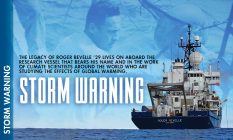
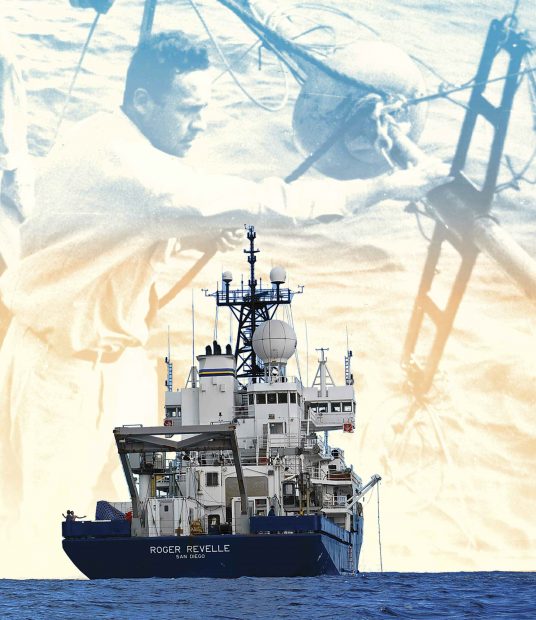
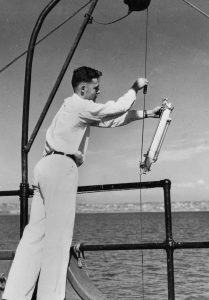
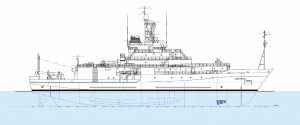
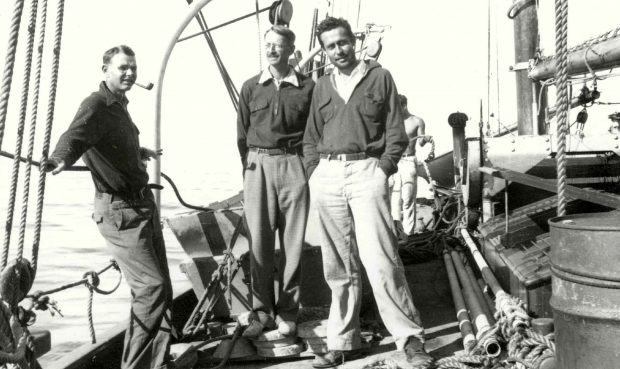
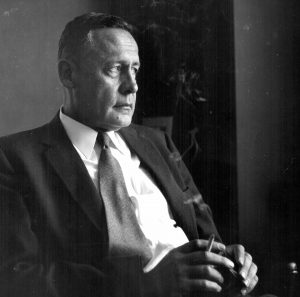

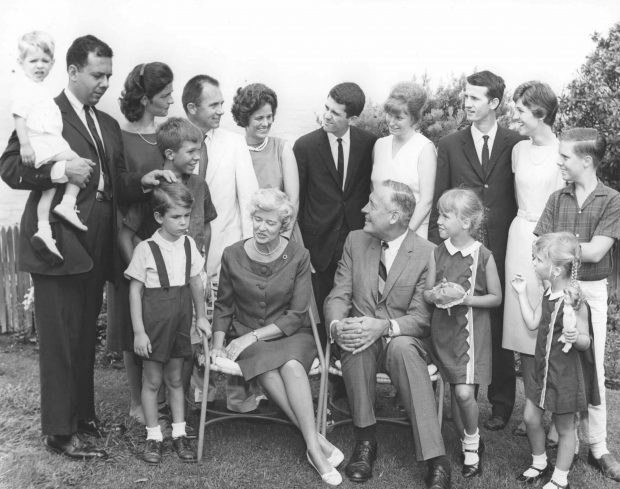

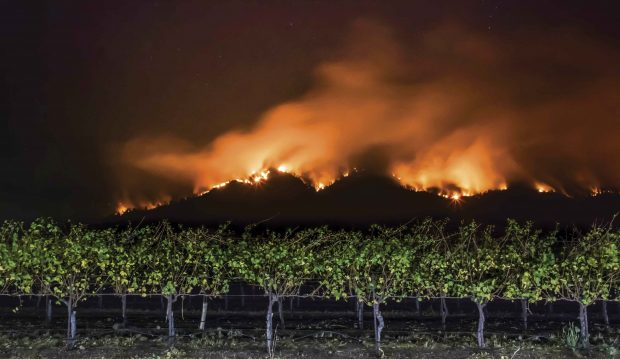
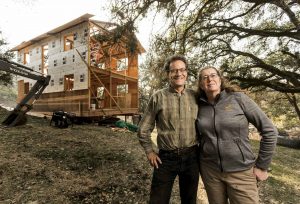
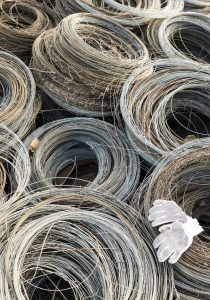


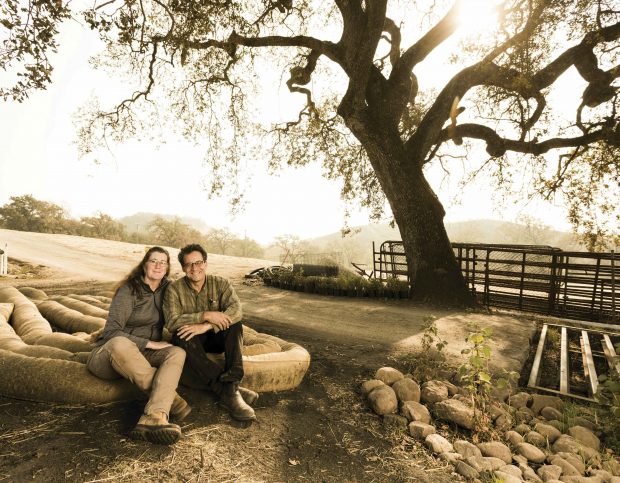


 “Jim Kauahikaua, U.S. Geological Survey’s Hawaiian Volcano Observatory. I’ll do a quick summary of what’s happening. Vents eight and 16 have reactivated. Twenty-two and 13 are still the main southbound channels going into the two ocean entries, though those have been quite weak today …”
“Jim Kauahikaua, U.S. Geological Survey’s Hawaiian Volcano Observatory. I’ll do a quick summary of what’s happening. Vents eight and 16 have reactivated. Twenty-two and 13 are still the main southbound channels going into the two ocean entries, though those have been quite weak today …” But the main thing that Kauahikaua says tried his patience during those long weeks was the bureaucratic conceit of some of the early incident management teams sent in by the Federal Emergency Management Agency (FEMA), which used the emergency as a training exercise. “None of them had Hawai‘i experience or eruption experience, so—for example, safety out in the field. All of a sudden, we had these people from God knows where, Georgia maybe, telling us what was safe and what was not safe. And that rubbed a lot of people the wrong way.”
But the main thing that Kauahikaua says tried his patience during those long weeks was the bureaucratic conceit of some of the early incident management teams sent in by the Federal Emergency Management Agency (FEMA), which used the emergency as a training exercise. “None of them had Hawai‘i experience or eruption experience, so—for example, safety out in the field. All of a sudden, we had these people from God knows where, Georgia maybe, telling us what was safe and what was not safe. And that rubbed a lot of people the wrong way.”
 Photos By Antoine Doyen
Photos By Antoine Doyen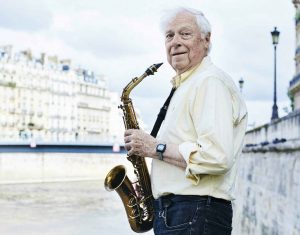 In his first blog post 11 summers ago, he celebrated the city’s parks and alleys and gardens. He responded emotionally to the sound of the great 19th-century organs in the churches of Saint-Sulpice and La Madeleine (“Tears of joy well in my eyes, taking me by surprise. My heart swells in my throat and explodes with the passion of the moment”). He reported briefly on visits to two jazz clubs. In one, a tiny bar (“about 4m by 8m, good beer, not so good sandwiches”), the audience barely outnumbered the performers: There were, in total, three listeners, including Crummer; the band was a tenor sax player and a pianist (“I listen to the sound of six hands clapping as they finish each tune”).
In his first blog post 11 summers ago, he celebrated the city’s parks and alleys and gardens. He responded emotionally to the sound of the great 19th-century organs in the churches of Saint-Sulpice and La Madeleine (“Tears of joy well in my eyes, taking me by surprise. My heart swells in my throat and explodes with the passion of the moment”). He reported briefly on visits to two jazz clubs. In one, a tiny bar (“about 4m by 8m, good beer, not so good sandwiches”), the audience barely outnumbered the performers: There were, in total, three listeners, including Crummer; the band was a tenor sax player and a pianist (“I listen to the sound of six hands clapping as they finish each tune”).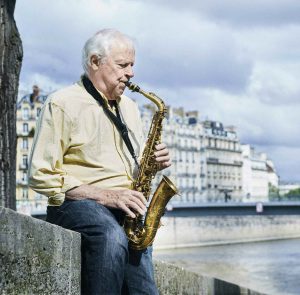 During his first month in the city, at the coffee hour after a regular service at the interdenominational American Church in Paris, he noticed a woman across the room. “She looked like a damsel in distress,” he recalls. “I thought ‘Uh-oh, that’s trouble’ but I went over and introduced myself. This is a church for Americans mostly, but she was French. She had an apartment to rent on the Île Saint-Louis, and she was there to post a notice on the church bulletin board.”
During his first month in the city, at the coffee hour after a regular service at the interdenominational American Church in Paris, he noticed a woman across the room. “She looked like a damsel in distress,” he recalls. “I thought ‘Uh-oh, that’s trouble’ but I went over and introduced myself. This is a church for Americans mostly, but she was French. She had an apartment to rent on the Île Saint-Louis, and she was there to post a notice on the church bulletin board.”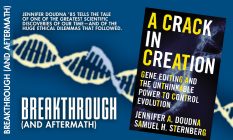
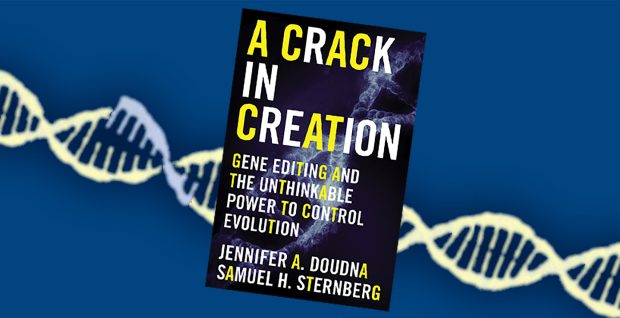 Biochemist and UC Berkeley Professor Jennifer Doudna ’85 and her team discovered CRISPR-Cas9, a game-changing gene-editing technique with tremendous possibilities for curing diseases of all kinds, thanks to its precision. But with that finding, Doudna (who is also a Pomona trustee) discovered something else—that a great revelation sometimes brings with it a lot of wrestling. In A Crack in Creation, she tells a story that is about both success and struggle. PCM Book Editor Sneha Abraham talked to Doudna about the implications of what might be the most revolutionary scientific breakthrough of our time. This interview has been edited and condensed for space and clarity.
Biochemist and UC Berkeley Professor Jennifer Doudna ’85 and her team discovered CRISPR-Cas9, a game-changing gene-editing technique with tremendous possibilities for curing diseases of all kinds, thanks to its precision. But with that finding, Doudna (who is also a Pomona trustee) discovered something else—that a great revelation sometimes brings with it a lot of wrestling. In A Crack in Creation, she tells a story that is about both success and struggle. PCM Book Editor Sneha Abraham talked to Doudna about the implications of what might be the most revolutionary scientific breakthrough of our time. This interview has been edited and condensed for space and clarity. 